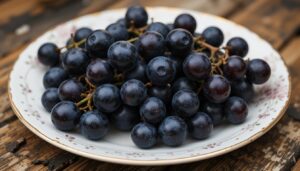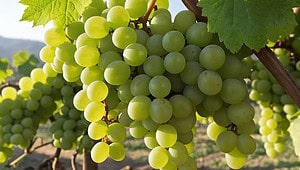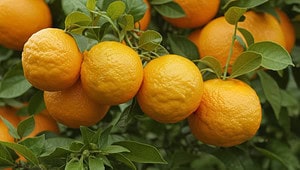Table of Contents
Rosaceae Fruits: Healthy and Tasty
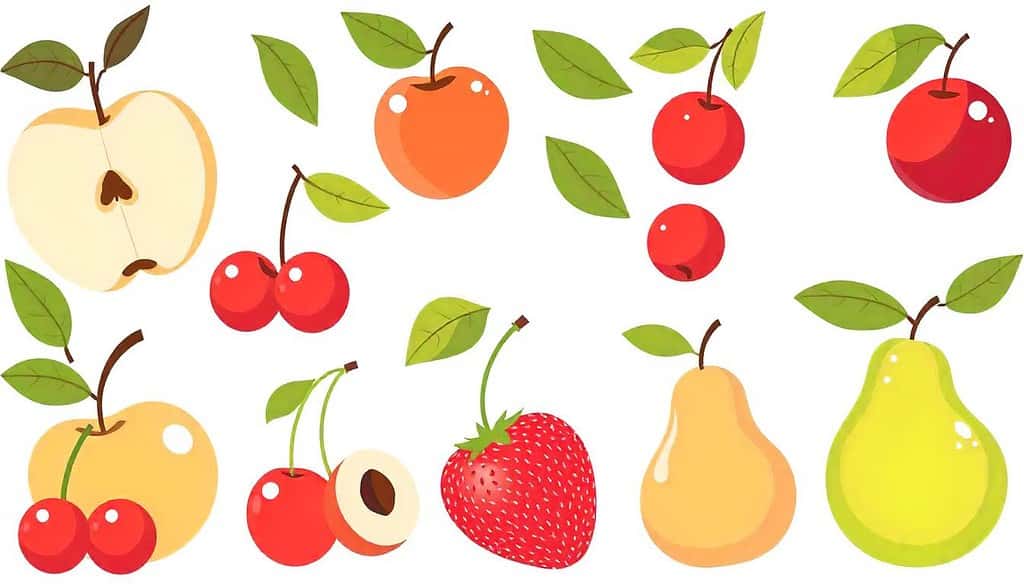
The Rosaceae family, commonly known for its beauty in flowering plants, also boasts a diverse range of delicious and economically significant fruits enjoyed worldwide. The Rosaceae fruit family or Rose family is one of the most popular and important fruit families in the World. These Rosaceae fruits, celebrated for their vibrant flavors and health benefits, play a vital role in cuisines and diets. Apples, one of the most widely consumed fruits globally, are a staple of the family, cherished for their crisp texture and the balance of sweetness and tartness. They are ideal for fresh snacking, baking, and juicing.
Pears are another versatile member of Rosaceae, known for their juicy and smooth texture that makes them a perfect choice for desserts, salads, and canning. Cherries, ranging from sweet to tart, are a summertime favorite, often eaten fresh or used in pies, jams, and cocktails. The allure of cherries lies in their rich, juicy flesh, which packs a punch of flavor in every bite.
Peaches, with their velvety skin and succulent, sweet interior, have a special place in the family. They are perfect for eating fresh, adding to desserts, or blending into smoothies. Nectarines, closely related to peaches but with smooth skin, offer a similar burst of flavor and are equally versatile in their use. Plums are known for their diverse varieties, which range in color and taste, from intensely sweet to tangy. Dried plums, commonly known as prunes, are appreciated for their nutritional value, particularly in promoting digestive health. Apricots, smaller and less juicy but equally delicious, are a favorite for drying and making into preserves, and their delicate flavor pairs well with both sweet and savory dishes.
Berries also shine within the Rosaceae family, offering some of the most flavorful and nutritious varieties. Raspberries captivate with their soft texture and tangy sweetness, often incorporated into desserts or enjoyed fresh. Blackberries share a similar appeal, with their bold and juicy flavor making them a favorite for jams and cobblers.
Strawberries, iconic and highly versatile, are prized for their vibrant red color and sweet, fragrant taste, appearing in everything from breakfast bowls to decadent desserts. Rosaceae fruits are not only delicious but also packed with nutrients, making them an essential component of a healthy diet. Their incredible diversity ensures that there is something for everyone, from crisp apples to luscious berries, illustrating the remarkable contribution of Rosaceae fruits to the world of flavor and nutrition.
In this article, we are going to discuss 8 amazing fruits that come under the Rosaceae fruit family.
1. Rosaceae Fruits: Apple (Malus domestica)
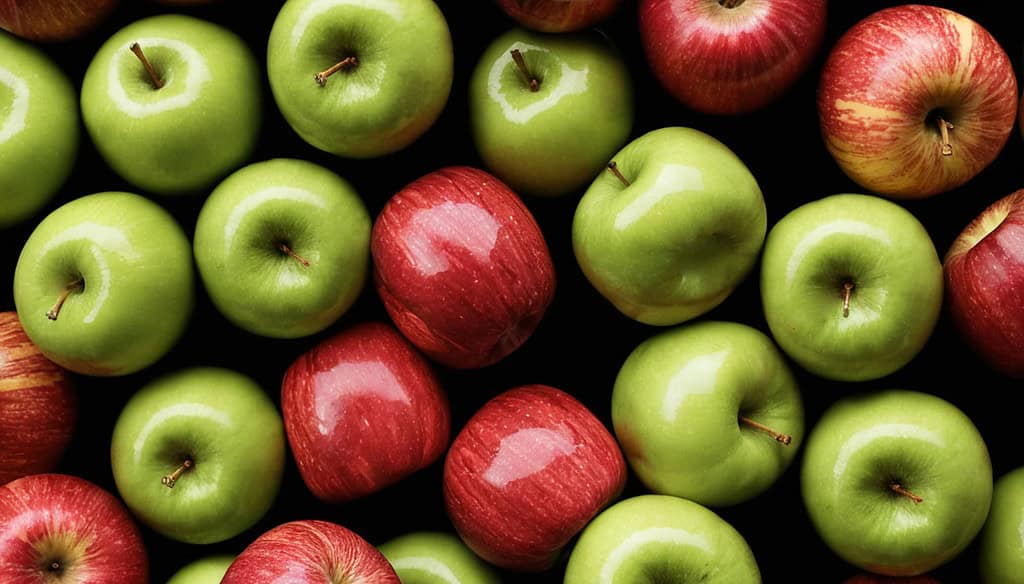
Apples are among the most renowned Rosaceae fruits, cultivated and enjoyed worldwide for centuries. They come in a wide array of varieties, each offering unique flavors and textures, from the crisp and tangy Granny Smith to the sweet and juicy Honeycrisp. Apples are celebrated for their versatility, whether eaten fresh as a refreshing snack or incorporated into numerous dishes, such as pies, sauces, and salads. Their fibrous flesh and rich flavors make them an excellent base for juicing and cider production, an industry that flourishes in many parts of the world.
These fruits from the Rosaceae family are highly valued for their nutritional benefits. High in dietary fiber, particularly pectin, they aid in digestion and promote a feeling of fullness. Additionally, apples are rich in vitamin C, an antioxidant that supports the immune system and skin health. Their phytochemicals, such as flavonoids and polyphenols, contribute to various health benefits, including reducing inflammation and improving heart health.
Growing apples requires specific environmental conditions, with many varieties thriving in temperate climates. The cultivation process involves selecting rootstocks that affect the size and productivity of the apple trees. Apple orchards are carefully managed, with pruning and pest control being crucial practices to ensure a healthy harvest. Pollination is another essential factor, and apple trees often rely on bees to pollinate their blossoms.
These Rosaceae fruits have inspired cultural traditions and folklore, from tales of Johnny Appleseed spreading seeds across America to the classic association of apples with wisdom and temptation in various mythologies. Apple picking is a cherished autumn activity, attracting families to orchards to enjoy the fruit straight from the tree. The influence of apples on the culinary world cannot be overstated, as they provide the foundation for countless beloved recipes. Their adaptability to different cooking techniques, such as baking, poaching, and roasting, makes them a staple ingredient across many cuisines. Apples also serve as a companion to savory flavors, pairing well with cheeses, meats, and herbs to create balanced and flavorful dishes.
2. Rosaceae Fruits: Pear (Pyrus spp.)
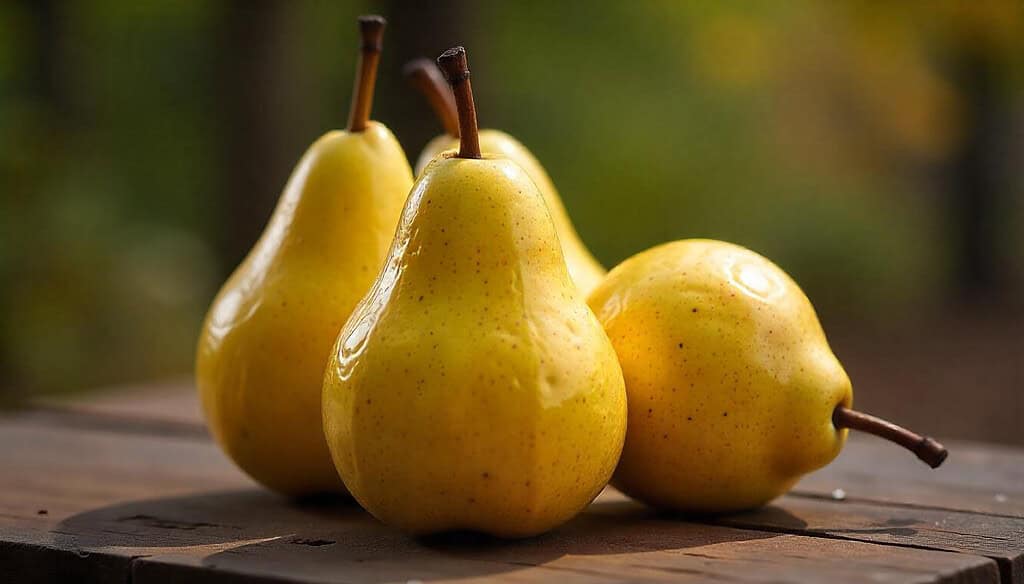
Pears, another distinguished member of the Rosaceae fruits, are adored for their delicate sweetness and smooth, juicy flesh. There are several popular pear varieties, such as Bartlett, Bosc, and Anjou, each bringing its own unique flavor profile and texture to the table. While Bartlett pears are known for their juicy and aromatic quality, Bosc pears are firmer and more suited for baking and poaching. Pears are highly adaptable, often used in fresh salads, cooked desserts, or as accompaniments to cheeses and wines. The creamy texture and subtly sweet flavor of these Rosaceae fruits make them a favorite in savory dishes, where they add depth and balance to flavors, especially in salads featuring strong cheeses like blue or goat cheese.
Nutritionally, pears are rich in dietary fiber, which aids digestion and helps maintain a healthy weight by promoting satiety. They also contain vitamin C and copper, both of which contribute to overall health and the maintenance of bodily tissues. Pears have a lower glycemic index compared to some other fruits, making them a suitable choice for people watching their blood sugar levels. The skin of pears holds a significant amount of fiber and phytonutrients, so eating them unpeeled is often recommended for maximum health benefits. Cultivating pears involves patience and expertise, as pear trees require careful maintenance to thrive. Like apples, they prefer temperate climates and successful cultivation depends on managing pests, diseases, and proper pollination.
Many pear trees have a unique shape, with branches that spread horizontally, allowing for better light exposure and fruit development. These Rosaceae fruits have a storied history, with evidence of their cultivation dating back thousands of years to ancient civilizations in Europe and Asia. Their presence in art and literature is equally notable, often symbolizing abundance and fertility.
3. Rosaceae Fruits: Cherry (Prunus avium and Prunus cerasus)

Cherries are among the most vibrant and appealing Rosaceae fruits, offering a delightful mix of sweetness and tartness that makes them a summer favorite. There are two main types of cherries: sweet (Prunus avium) and sour (Prunus cerasus). Sweet cherries, such as Bing and Rainier, are perfect for eating fresh, with their firm flesh and rich, juicy flavor. In contrast, sour cherries, like Montmorency, are more acidic and are typically used in cooking, especially for making pies, jams, and preserves. The brilliant red and deep purple hues of cherries are as appealing to the eye as their taste is to the palate.
These fruits are not only tasty but also rich in compounds that promote health. Cherries are high in antioxidants, particularly anthocyanins, which give them their vibrant color and are known to have anti-inflammatory properties. Additionally, cherries provide potassium, which is essential for maintaining proper heart and muscle function.
Growing cherries requires attention to detail and a suitable climate, often favoring regions with cold winters and warm summers. Cherry trees produce beautiful blossoms in the spring, drawing visitors to witness the breathtaking displays of white and pink blooms. These blossoms later give way to the development of the succulent fruits that ripen in early to mid-summer. However, cherry cultivation comes with challenges, including susceptibility to pests and diseases, as well as the risk of damage from late spring frosts.
Despite these challenges, the demand for cherries remains strong, with festivals celebrating the harvest season around the world. The cultural significance of cherries is evident in events such as Japan’s cherry blossom festivals, which celebrate the fleeting beauty of the blooms and the joy of the harvest. As Rosaceae fruits, cherries have found their way into diverse culinary traditions, from sweet desserts to savory dishes, where their tangy flavor adds a unique twist to recipes.
4. Rosaceae Fruits: Peach (Prunus persica)

Peaches are another standout in the Rosaceae family, loved for their luscious, juicy flesh and fragrant aroma. The fuzzy skin and tender, golden interior make peaches an irresistible summer delight. Varieties of peaches range from clingstone to freestone, referring to how easily the flesh separates from the pit. This distinction influences their culinary uses: freestone peaches are ideal for fresh eating, while clingstone peaches are often used for canning and preserving. Peaches can be grilled, poached, or baked to bring out their natural sweetness, making them a versatile ingredient in both sweet and savory recipes. The rich, sugary juice that drips from a perfectly ripe peach is a hallmark of these Rosaceae fruits, creating a memorable sensory experience.
Peaches are more than just delicious; they are a source of various nutrients, including vitamins A and C. Vitamin A, derived from beta-carotene, contributes to healthy skin and vision, while vitamin C acts as an antioxidant, supporting the immune system. Peaches are also relatively low in calories and high in water content, making them a hydrating and healthy snack option. In traditional medicine, peaches have been used for their purported benefits in improving digestion and skin health.
The cultivation of peaches requires a warm and temperate climate, with cold winters that allow for proper dormancy. The trees bloom in spring, producing beautiful pink flowers before the fruit begins to develop. As with other Rosaceae fruits, successful peach farming involves managing pests and diseases, along with careful irrigation and pruning to optimize fruit quality.
The cultural significance of peaches stretches back thousands of years, particularly in China, where they are considered symbols of longevity and immortality. The fruit’s spread to the Western world brought about a range of culinary applications, with peach cobbler, jam, and pie becoming beloved treats in various regions. The soft, aromatic flesh of peaches pairs well with both sweet flavors like honey and savory ingredients such as basil or prosciutto. These fruits exemplify the indulgence of summer, offering a burst of flavor and a refreshing experience that highlights the incredible variety found within Rosaceae fruits.
5. Rosaceae Fruits: Plum (Prunus domestica)

Plums are a well-loved member of the Rosaceae fruits, known for their rich flavor, versatility, and impressive variety. They come in a range of colors, including deep purples, reds, yellows, and greens, each offering its own distinct taste and texture. With their juicy flesh and slightly tart skin, plums are enjoyed both fresh and dried, with dried plums, or prunes, holding their own as a popular snack and culinary ingredient. Prunes, in particular, are appreciated for their digestive benefits due to their high fiber and natural sorbitol content, making them a natural choice for supporting gut health. Plums can be baked, poached, or even grilled, adding a unique sweetness and depth of flavor to both sweet and savory dishes.
Nutritionally, plums are packed with vitamins, particularly vitamin C and vitamin K, both of which play essential roles in supporting immune health and aiding blood clotting, respectively. They also contain antioxidants like phenolic compounds, which can help protect cells from oxidative damage and promote overall health. Plums are relatively low in calories and high in water content, making them a hydrating, guilt-free snack option.
As with many Rosaceae fruits, the cultivation of plums requires specific care and attention. These trees prefer temperate climates and benefit from well-drained soil to flourish. Pollination is key to successful plum production, with many varieties requiring cross-pollination from compatible species to yield a healthy crop. Pruning and pest management are crucial in maintaining the quality and quantity of the harvest.
Historically, plums have been enjoyed since ancient times, with their origin tracing back to Asia and Europe. Over centuries, they have been selectively cultivated to produce the diverse varieties we see today, each with distinct flavors and culinary uses. In various cultures, plums symbolize perseverance and resilience, blooming early in the spring despite harsh conditions. Their versatility in cooking has made them a staple in many cuisines around the world, appearing in jams, sauces, and even alcoholic beverages like plum wine. These Rosaceae fruits are beloved for their vibrant flavors and impressive health benefits, making them an essential part of both traditional and modern diets.
6. Rosaceae Fruits: Apricot (Prunus armeniaca)

The apricot, a small yet flavorful member of the Rosaceae fruits, is celebrated for its smooth, golden skin and sweet, slightly tart taste. Unlike some other fruits in the family, apricots are smaller and less juicy, but they compensate with an intense flavor that holds up well in various culinary applications. Apricots are commonly enjoyed fresh, dried, or in the form of jams and preserves, with dried apricots being a particularly popular snack due to their concentrated sweetness. The inherent sugars and lively taste of these ingredients often lead to their inclusion in desserts and baked products. Additionally, they can complement savory dishes, introducing a touch of sweetness and acidity that enhances the overall flavor profile.
Apricots are a good source of vitamins A and C, both of which support skin health and immune function. They also provide dietary fiber, which aids digestion and promotes satiety, making them a smart choice for a balanced diet. Additionally, apricots contain antioxidants such as beta-carotene, which gives them their orange hue and helps protect cells from damage. Like other Rosaceae fruits, apricots require specific growing conditions to thrive. They prefer warm, dry climates and well-drained soil, with late frosts presenting a potential risk to early blossoms. Apricot trees need adequate spacing to ensure good air circulation, reducing the chance of disease.
The apricot has a long history, with roots in ancient Armenia and China, where it was cultivated and revered for its taste and health benefits. Its spread along trade routes led to its establishment in Europe and the Middle East, where it became a cherished fruit. In various cultures, apricots are symbolic of warmth and renewal, as they thrive in hot climates and are often among the first fruits to ripen in early summer. The adaptability of apricots has made them a key ingredient in numerous traditional dishes, from Middle Eastern tagines to European pastries. As one of the tastiest Rosaceae fruits, the apricot remains a popular choice for both fresh consumption and culinary use.
7. Rosaceae Fruits: Raspberry (Rubus idaeus)
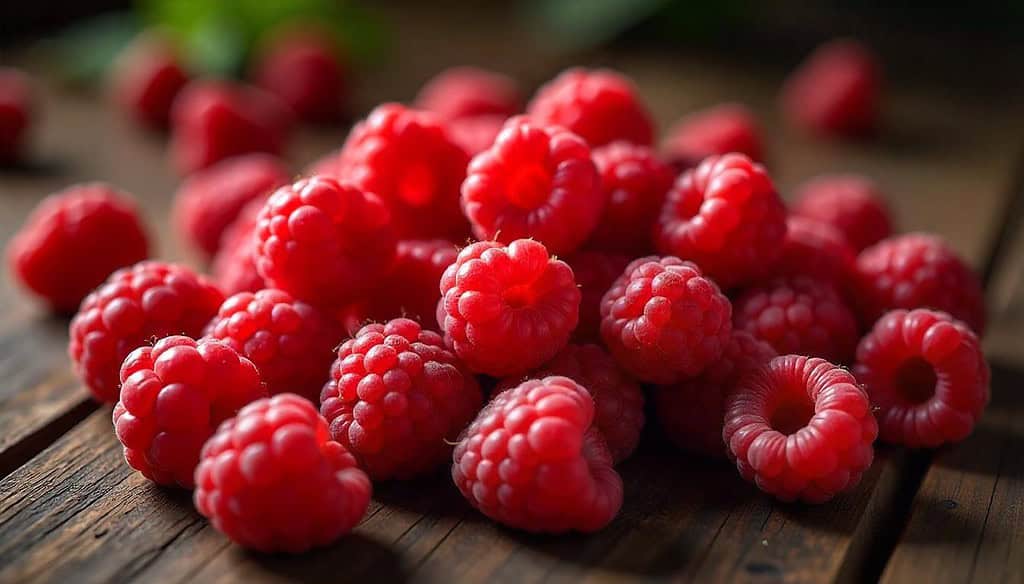
Raspberries, with their delicate structure and vibrant color, are one of the most delightful Rosaceae fruits. These berries come in various shades, including red, black, and golden varieties, each with a slightly different taste. Known for their sweet-tart flavor, raspberries are often enjoyed fresh, sprinkled over desserts, or blended into sauces and jams. Their tiny, juicy drupelets make them incredibly versatile, ideal for everything from garnishing breakfast bowls to enhancing cocktails with their tartness. Raspberries can also be frozen, allowing their distinct flavor to be enjoyed year-round. These berries’ unique texture and flavor have made them a staple in both home kitchens and gourmet restaurants.
In terms of nutrition, raspberries are packed with dietary fiber, vitamin C, and manganese. The high fiber content supports digestive health, while vitamin C boosts immune function and skin health. Raspberries are also rich in antioxidants, particularly anthocyanins, which contribute to their deep color and provide anti-inflammatory properties. These compounds can aid in protecting cells from oxidative stress, which is beneficial for long-term health. Like other Rosaceae fruits, cultivating raspberries requires attentive care. They thrive in cooler climates with well-drained soil, and they benefit from regular pruning to maintain healthy growth and productivity. Raspberries are often grown on trellises to support their long, arching canes, which helps in managing space and ensuring proper air circulation.
Historically, raspberries have been gathered and enjoyed since ancient times, with their origins believed to be in Europe and Asia. Over time, they spread globally and became cultivated on a large scale. In various cultures, raspberries symbolize kindness and thoughtfulness, perhaps due to their delicate appearance and unique structure. Today, raspberries remain a beloved ingredient in many desserts, including tarts, jams, and mousses, where their bright flavor shines through. As one of the most nutritious and flavorful Rosaceae fruits, raspberries offer a delightful eating experience along with a host of health benefits.
8. Rosaceae Fruits: Strawberry (Fragaria × ananassa)

Strawberries, with their bright red color and characteristic aroma, are among the most widely recognized and cherished Rosaceae fruits. Known for their sweet and juicy flavor, strawberries are often enjoyed fresh, dipped in chocolate, or as toppings for desserts. Their versatility in the culinary world is unmatched, as they can be incorporated into a wide range of dishes, from smoothies and salads to baked goods and sauces. Strawberries are highly popular in both domestic and commercial agriculture, with peak seasons in spring and early summer drawing enthusiasts to strawberry festivals and picking events.
Nutritionally, strawberries are packed with vitamin C, manganese, and folate, making them a great addition to a balanced diet. They are low in calories but high in fiber, which helps regulate digestion and blood sugar levels. Strawberries also contain polyphenols, which contribute to their antioxidant properties and may have beneficial effects on heart health. These berries are relatively easy to grow compared to some other Rosaceae fruits, as they can be cultivated in a variety of climates and soil types. Strawberry plants produce runners, or stolons, which spread across the soil and create new plants, making them highly productive under suitable conditions.
Historically, wild strawberries were enjoyed by various cultures, but the larger, cultivated varieties we know today are a result of crossbreeding between species from the Americas and Europe. This hybridization process led to the modern strawberry, which has since become a staple in many cuisines worldwide. Strawberries have come to symbolize love and happiness in folklore, possibly due to their heart-like shape and bright red color. Their popularity has only grown, with strawberries being used in everything from breakfast dishes to elaborate desserts. As one of the most beloved Rosaceae fruits, strawberries continue to captivate taste buds with their fresh, sweet flavor and impressive nutritional profile.
Disclaimers: *This article is only for informational purposes.
**Do not make your important decisions based solely on the information provided in this article. Do your own research.
***Information in this article may vary or get updated in the future.
****Contact a doctor or a medical professional for any medical emergency.
Read More Science and Space Articles
- 8 Amazing Citrus Fruits That Will Brighten Your Day
- 8 Non-CO₂ Greenhouse Gasses That Are Worst Than CO₂
- Chemistry: 8 Unique Ways to Become Efficient At It
- 8 Ways Water Crisis is Worsened by Global Climate Change
- 8 Amazing Ways Brain Anatomy is Altered by New Learning
- 8 Disastrous Ways Deforestation Destroys Biodiversity
- Mathematics: 8 Interesting Ways To Become Efficient At It
- 8 Worst Ways Global Climate Change Hurts The Impoverished
- Danger Of Environmental Damage: 8 Ways A Person Can Help
- Eradication Of Poverty: 8 Critical Ways Science Helps
- STEM Fields: 8 Important Reasons Why You Must Learn Them
- Making Your Kid Efficient At STEM Subjects: 8 Important Steps
- Making Your Kid Science Enthusiast: 8 Important Steps
- Becoming A NASA Aspirant: 8 Important Steps You Must Follow
- Top 8 Important Wellness Habits That You Must Follow
- Top 5 Amazing Whole Grains That Are Healthier Than Rice
- Indian Space Program: 8 Incredible Achievements
- China’s Space Program: 5 Amazing Accomplishments
- Oranges: 11 Incredible Facts About This Tangy Citrus Fruit
- Discoveries by JWST: 10 Incredible Findings of The Telescope
- NASA’s MOXIE Creates O2: Big Step Towards Mars Colonization
- Top 5 Amazing Properties of Time That Defy Common Sense
- 10 Factors for Emergence of Intelligent Life in The Universe
- Space Science: 6 Vital Reasons Why We Should Invest in It
- Solar System: 10 Astonishing Uniqueness of our star system
- Our Universe: An Incredible Journey of 13.7 Billion Years
- Top 6 Solar System Objects That Might Destroy Life On Earth
- Certain End of The Universe: 4 Forces of Nature to Watch Out For
- Big Bang: An Incredible Start of Universe 14 Billion Years Ago


